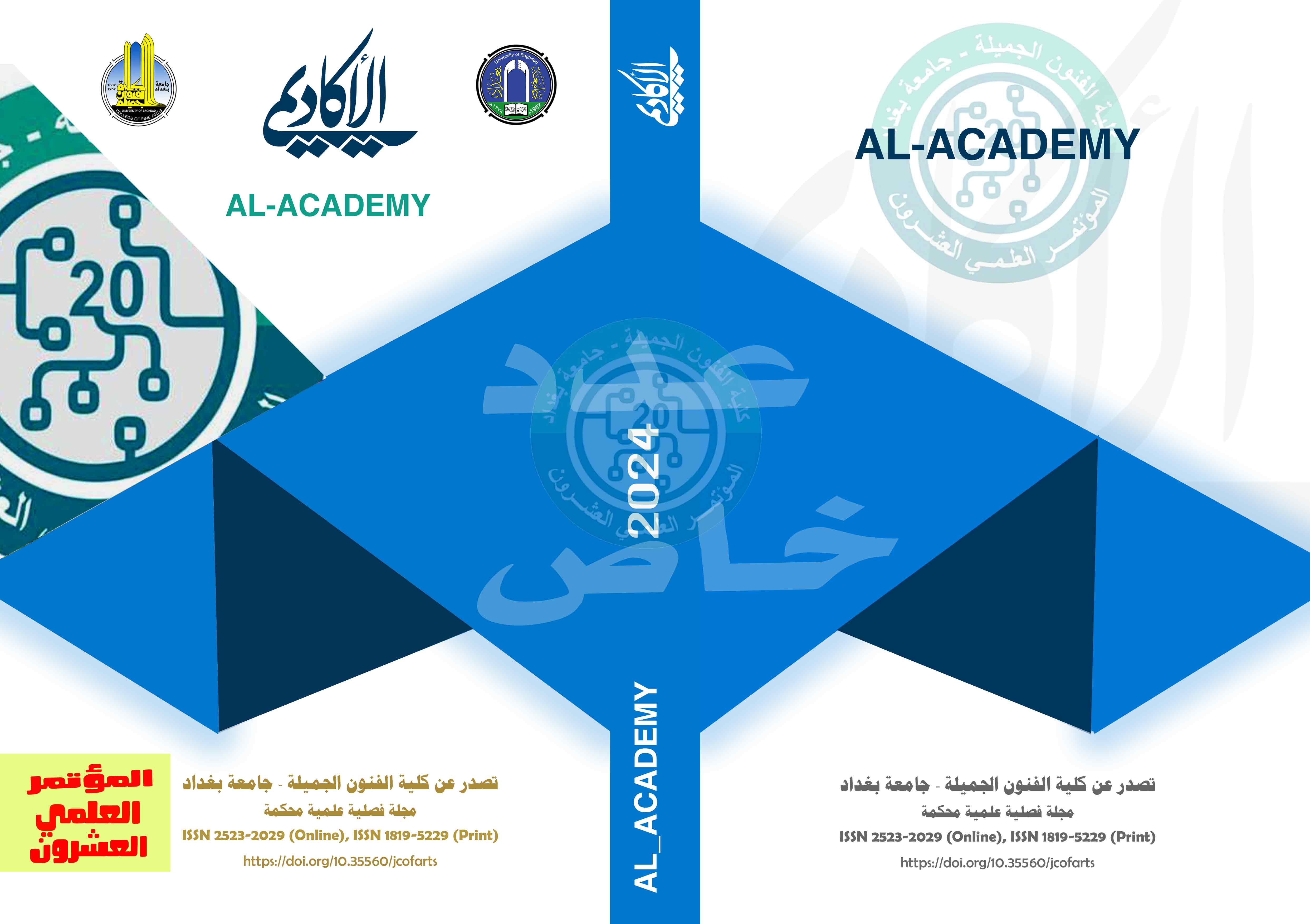Aesthetics of design adaptation in the Ornaments of the Prophet’s kiswah
DOI:
https://doi.org/10.35560/jcofarts1397Abstract
This research is concerned with studying the Aesthetics of design adaptation in the Ornaments of the Prophet’s kiswah. It also aims to provide the recipient with a wider scope to learn about the most important representations of design adaptation in terms of decorations, colors, styles, as well as technique and implementation. Conducted on the Prophet’s kiswah, the research included four chapters. The first chapter included the research problem, which was represented by the following question: What are the representations of design adaptation in the decorations of the Prophet’s kiswah?
The researcher limits the goal of the research, which is: revealing the representations of design adaptation in the decorations of the Prophet’s kiswah. The second chapter (theoretical framework) included a topic: Design adaptation between meaning and function. The third chapter included research procedures and relied on the descriptive approach. The research sample was selected according to the research tool represented by the analysis form, the validity of which was confirmed by a group of specialists in this field. As for the fourth chapter It included presenting the results, recommendations and proposals. As well as a list of sources.
References
Abdel Hamid, S. (1987). The Creative Process in the Art of Photography. Kuwait: National Council for Culture, Arts and Literature.
Abdul Amir, W. (2003). Methods of Designing Floral Decorations in the Facades of the Holy Abbasid Hazrat. Baghdad: University of Baghdad, College of Fine Arts, Department of Arabic Calligraphy and Ornamentation,Unpublished letter.
Al-Bazzaz, A. (1997). Design in Design. Baghdad: Arab Foundation for Studies and Publishing.
Al-Bushikhi, A.-S. (1995). Critical and rhetorical terms in the book Al-Bayan and Al-Bayan by Al-Jahiz. Kuwait: Dar Al-Qalam for Publishing and Distribution.
Al-Ghazali, I. (2005). Biology of religious sciences. Beirut: Dar Ibn Hazm.
Al-Nouri, A.-Z. (2015). Diversity of plant decorative formations in the facades of Iraqi holy shrines. Baghdad: University of Baghdad, College of Fine Arts, Department of Arabic Calligraphy and Ornamentation, Master’s Thesis.
Al-Razi, M. (1986). Muhammad bin Abi Bakr bin Abdul Qadir. Beirut: Lebanon Library.
Al-Sharaa, R. (2007). The concept of abstraction in Islamic art and its impact on the emergence of securitization decoration. Sharjah: University of Sharjah Journal of Sharia and Human Sciences, Volume 4, Issue 3.
Fahmy, M. (1978). Psychological Adaptation. Cairo: Misr Library, Misr Printing House.
Hamouda, Y. (1981). Color Theory. Alexandria: Al-Maaref Printing and Publishing Foundation.
Kamel, s. (2015). Aesthetic values of the characteristic of contrast in the ornamental compositions of Islamic architecture. Baghdad: College of Fine Arts, University of Baghdad, Al-Academy Journal, Issue 73.
Sabeela, M. (2000). Modernity and Postmodernism. Baghdad: Center for Studies in the Philosophy of Religion.
Saliba, J. (1982). The Philosophical Dictionary. Beirut: Dar Al-Kitab Al-Lubani.
Scott, G. (1980). Basics of design. (A. B. Ibrahim, Trans.) Egypt: Dar Nahdet Misr for Printing and Publishing.
Shirazad, S. (1985). Principles in Art and Architecture. Baghdad: Arab House.
Youssef, A. (B.T). Illustration. Cairo: Ramsnes Press.














